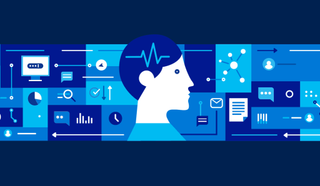AI for Humanitarian Action is a new $40M Microsoft program to help those most in need
Putting intelligent computing towards good use, Microsoft A.I. is not so scary after all.

While consumers are still struggling to see the daily realities of artificial intelligence (A.I.) Microsoft is pushing ahead with the technology for other, more philanthropic uses. Today, Microsoft is announcing a new five-year $40 million-dollar initiative using A.I. to assist with "humanitarian crises caused by natural and man-made disasters, oppression and other emergencies."
The project is called AI for Humanitarian Action and it will "harness the power of AI to focus on four priorities – helping the world recover from disasters, addressing the needs of children, protecting refugees and displaced people, and promoting respect for human rights" according to a press release from Microsoft.
AI for Humanitarian Action is part of a more extensive $150 million-dollar five-year program called Microsoft's AI for Good, which includes the previously announced AI for Earth and AI for Accessibility initiatives.
Through a process, Microsoft works with select non-governmental organizations (NGOs) and humanitarian groups with allocations for "financial grants, technology investments and partnerships that combine our AI and data science know-how with these groups' core expertise."
While all of this may sound a bit squishy without firm examples, Microsoft did present an outline for four significant areas they seek to leverage A.I. solutions for humanitarian issues, including:
Disaster response
It seems that no corner of the planet is immune to the devastating consequences of natural disasters, whether they be fires, drought, or storms. Artificial intelligence and data modeling hold huge promise for forecasting and detecting early signs of coming disasters, and also can help responders better target their aid. AI technologies like machine vision can quickly analyze images of roads damaged or destroyed by an event, making way for a faster and safer response. In a new partnership with the World Bank, United Nations, and partners from the tech industry, relief organizations will be better able to predict when and where future famines will occur so aid can arrive earlier, potentially saving more lives.
Needs of children
We believe AI can equip NGOs and governments with better tools to protect the world's most vulnerable population: children. Human trafficking, for instance, is one of the world largest criminal industries, ensnaring millions of children each year. Already we are using predictive analytics and bot frameworks to target both the supply and demand underpinning human trafficking – ultimately disrupting criminals and bringing relief to victims around the world.Basic health services for children are also in critical need around the world. Our longtime NGO partner, Operation Smile, uses machine vision AI and facial modeling to improve the organization's surgical outcomes and help more children in need of facial surgeries. SuddenInfant Death Syndrome (SIDS) is another issue where advanced technology can help. Each year thousands of babies die, yet the root causes of SIDS are not yet fully understood. Microsoft is using statistical analysis and machine learning to provide new insights for scientists working to identify the causes of, and put an end to, SIDS worldwide.
Refugees and displaced people
The number of refugees and displaced people in the world are at a record high, and this is a seminal challenge of our generation. AI and machine learning have the potential to improve the lives of approximately 68 million displaced people in the world, 28 million of whom are refugees. AI can help optimize the delivery of aid, supplies, and services to refugees and can scale NGOs' efforts to communicate and understand displaced peoples' needs. Microsoft is working already with the Norwegian Refugee Council, NetHope, and University College Dublin to develop a chatbot using AI technologies, such as language understanding, machine translation, and speech recognition to intelligently assist displaced youth to connect them with free high-quality educational resources. Using chatbots like this could also provide a model for aid workers in the field. It could help these workers communicate with displaced people who speak different languages and who need specific core services like access to food, health care, and shelter.
Human rights
We will collaborate with NGOs and humanitarian organizations to accelerate breakthrough solutions to help monitor, detect and prevent human rights abuses. Deep learning has created the ability to better predict, analyze and respond to critical human rights situations. Utilizing AI-powered speech translation, people can connect with pro bono lawyers who are protecting people's human rights.
For Microsoft, A.I. is a very different concept than what consumers may have seen in the movies, but with intelligent computing infusing daily computing tasks (see Office), the future of data analysis – especially when it comes to helping people – is quickly becoming a reality.
Get the Windows Central Newsletter
All the latest news, reviews, and guides for Windows and Xbox diehards.

Daniel Rubino is the Editor-in-chief of Windows Central. He is also the head reviewer, podcast co-host, and analyst. He has been covering Microsoft since 2007, when this site was called WMExperts (and later Windows Phone Central). His interests include Windows, laptops, next-gen computing, and watches. He has been reviewing laptops since 2015 and is particularly fond of 2-in-1 convertibles, ARM processors, new form factors, and thin-and-light PCs. Before all this tech stuff, he worked on a Ph.D. in linguistics, watched people sleep (for medical purposes!), and ran the projectors at movie theaters because it was fun.
